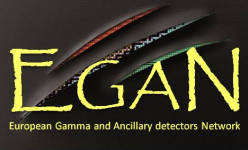Speaker
Andrea Gottardo
(LNL, INFN)
Description
The study of exotic nuclei has shown that significant changes of the well known shell structure along the stability valley occur, especially for very neutron-rich nuclei with mass numbers below 100. The two most accessible doubly-magic nuclei above A=100 are 132Sn (Z=50, N=82) and 208Pb (Z=82, N=126). Both of them are very neutron rich but the second one is nonetheless stable. The evolution of the Z=50 shell above N=82, and in general the structure of nuclei around 132Sn, is nowadays an object of intense research at radioactive beams facilities accelerating fission fragments around A=140. On the other side, little is known on the evolution of Z=82 shell closure beyond N=126 and on the neutron-rich nuclei around 208Pb, because of the experimental difficulties to reach such nuclei. The study of these heavy nuclei is relevant also for nuclear astrophysics, since the measurement of their β-decay half lives will improve the understanding of the r-process stellar nucleosynthesis in heavy nuclei.
Neutron-rich nuclei around 208Pb were populated by using a 1 GeV*A 238U beam at GSI and their study was made possible by the presence of long-lived isomeric states that were indeed expected by shell-model calculations. The resulting fragments were separated and analysed with the FRS-Rising setup. Many neutron-rich isotopes were identified for the first time. A significant number of new isomers were hence discovered. The new exotic isotopes observed, extend up to 218Pb along the Z=82 shell closure and up to N=134 and N=138 for the proton-hole and proton-particle Tl and Bi nuclei, respectively. The very exotic 210Hg nucleus was also produced and studied. In our talk, these experimental results will be discussed within state-of-the-art shell-model calculations. The significant discrepancies between the experimental findings and the behaviour expected from the usual seniority scheme will be pointed out, presenting the possible required modifications to nuclear models in this region.
Primary author
Andrea Gottardo
(LNL, INFN)

